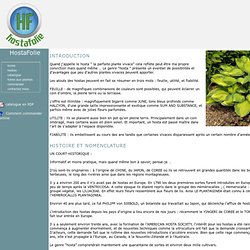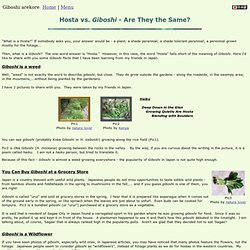

THE JOY OF GARDENING IN THE SHADOWS. Ashe magnolia is a rare native bigleaf magnolia in a size suitable for almost any garden.

Because shade gardens are not composed solely of perennials, three times a year I offer woody plants—shrubs, trees, and vines—to my customers. I want them to have a reliable source for large and healthy specimens, but I also want to make available woody plants for shade that are wonderful but hard-to-find. I am in the middle of an offer right now, and customers need to let me know if they want to order by Sunday, September 29.
To see the 2013 Fall Shrub Offer, click here. When I do these offers, I also do a post describing the plants in more detail. This is my own Ashe magnolia, which I planted in an open, north-facing bed. I have been coveting the native bigleaf magnolia, also known as the large-leaved cucumber tree, M. macrophylla, for a long time. The flower bud on the Ashe magnolia. Korean stewartia has attractive exfoliating bark that is especially ornamental in winter. Carolyn Like this: The Hosta Network. Hosta folie. Ce sont des plantes vivaces, poussant en motte, dont les feuilles disparaissent en hiver.

La plupart se développent en mottes arrondies, d’autres sont visiblement érigées et même évasées, comme le KROSSA REGAL ou le magnifique REGAL SPLENDOR. Ils ont tous des racines charnues blanches qui parfois se prolongent et forment alors rapidement de grands groupes, comme p.ex. Yellow Splash Rim ( ce ne sont pas mes favoris !) Il existe des formes de feuilles à foison : rondes, en forme de coeur, allongées : ainsi la combinaison de diverses formes de feuilles peut produire de jolis contrastes. Beaucoup de hostas connaissent aussi une phase juvénile et une phase adulte : durant sa jeunesse, les feuilles sont plutôt allongées : se remarque surtout chez les plantes issues de la culture cellulaire.
Certains hostas donnent seulement une poussée de feuilles comme la plupart des sieboldianas, d’autres produisent une deuxième poussée durant les mois d’été. Elles peuvent être fortement innervées p.ex. Hosta Mania! Hosta vs Giboshi - Are They the Same? "What is a Hosta?

" If somebody asks you, your answer would be - a plant; a shade perennial; a shade tolerant perennial; a perennial grown mostly for the foliage... Then, what is a Giboshi? The one-word answer is "Hosta. " However, in this case, the word "Hosta" falls short of the meaning of Giboshi. Here I'd like to share with you some Giboshi Facts that I have been learning from my friends in Japan. Giboshi is a weed Well, "weed" is not exactly the word to describe giboshi, but close. I have 2 pictures to share with you. You can see giboshi (probably Koba Giboshi or H. sieboldii) growing along the rice field (Pic1). Pic2 is Oba Giboshi (H. montana) growing between the rocks in the valley. Because of this fact - Giboshi is almost a weed growing everywhere - the popularity of Giboshi in Japan is not quite high enough. HOSTA LIBRARY.
Southeast Wisconsin Hosta Society. Hosta world. Green Hill Farm. Hosta farm. Hosta Helper from PlantsGalore.Com - Homepage from The Hosta Helper - Presented by PlantsGalore.Com. Société Québécoise des Hostas et des Hémérocalles (SQHH) Alphabetical list of Hosta photos on the British Hosta and Hemerocallis Society's website. British Hosta and Hemerocallis Society. Big Daddy. The American Hosta Society.